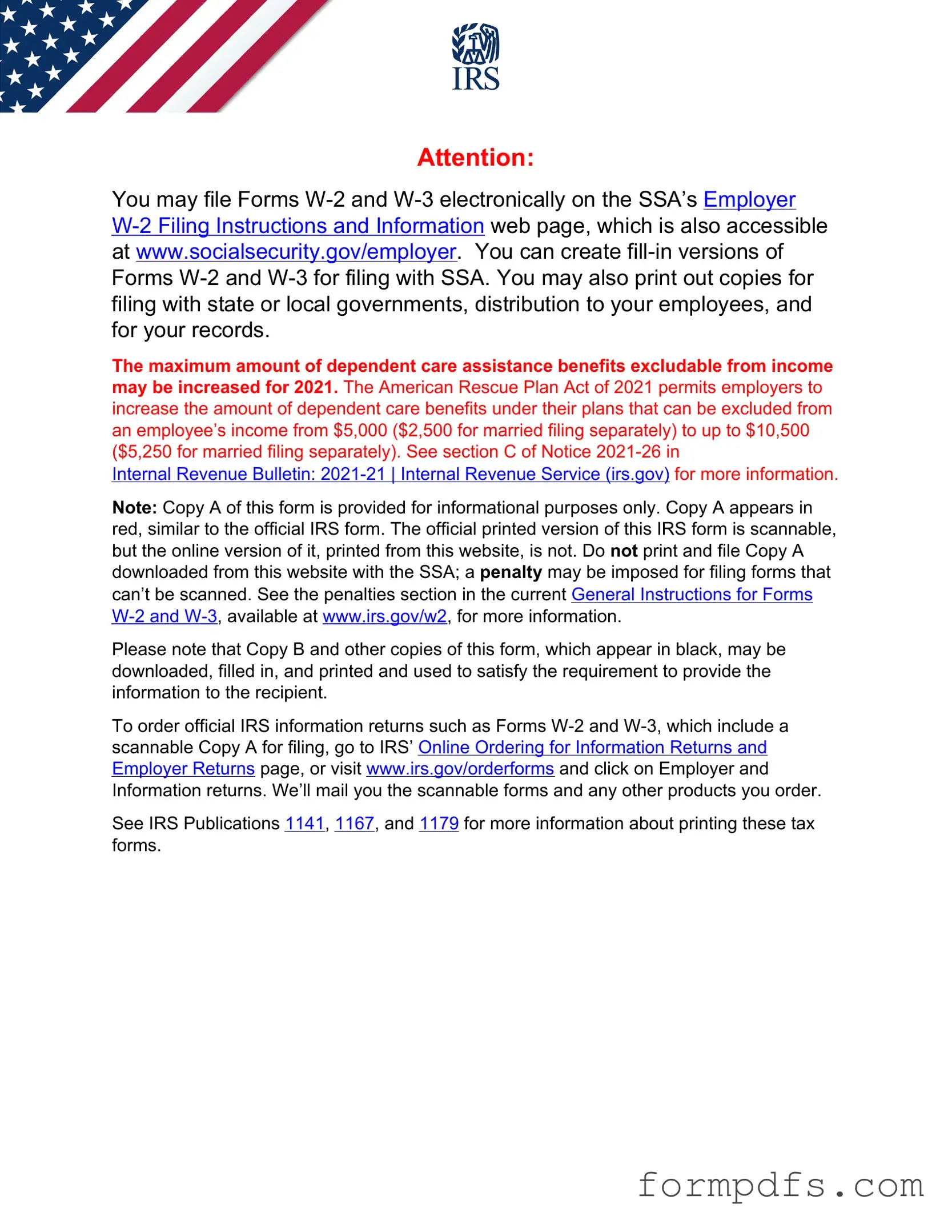What is the IRS W-2 form?
The IRS W-2 form, officially known as the Wage and Tax Statement, is a document that employers must provide to their employees. It reports an employee's annual wages and the amount of taxes withheld from their paycheck. This form is essential for employees when filing their income tax returns, as it summarizes their earnings and tax contributions for the year.
Who receives a W-2 form?
Employees who receive wages, salaries, or tips from their employer will receive a W-2 form. If you worked for an employer during the year, you should expect to receive this form by January 31 of the following year. This includes full-time, part-time, and seasonal employees.
When should I expect to receive my W-2 form?
Employers are required to send out W-2 forms to their employees by January 31. If you have not received your W-2 by mid-February, it is advisable to contact your employer to inquire about its status. Additionally, the IRS encourages employees to keep an eye on their mail and email for the form.
What should I do if my W-2 form has incorrect information?
If you notice any errors on your W-2 form, such as incorrect names, Social Security numbers, or wage amounts, you should contact your employer immediately. They can issue a corrected form, known as a W-2c. It’s important to resolve these discrepancies before filing your tax return to avoid potential issues with the IRS.
Can I file my taxes without a W-2 form?
While it is possible to file your taxes without a W-2, it is not recommended. The W-2 provides critical information about your earnings and tax withholdings. If you do not receive your W-2 in time, you may use Form 4852, which serves as a substitute for the W-2. However, this process can be more complicated, so it’s best to obtain the actual W-2 if possible.
What should I do with my W-2 after filing my taxes?
After you file your taxes, it’s important to keep your W-2 form for your records. The IRS recommends retaining copies of tax documents for at least three years. This can help in case of an audit or if you need to reference your income and tax information in the future.
Are there different types of W-2 forms?
Yes, there are different types of W-2 forms based on the type of employment. The most common is the standard W-2, which is issued for regular employment. However, there are variations for certain situations, such as W-2G for gambling winnings or W-2c for corrected forms. Each type serves a specific purpose and contains relevant information based on the context.
What if I lost my W-2 form?
If you lose your W-2 form, you should first reach out to your employer to request a duplicate. They are required to provide you with a copy. If you cannot obtain a duplicate from your employer, you can contact the IRS for assistance. They may provide you with a transcript of your earnings, which can help you file your taxes accurately.
